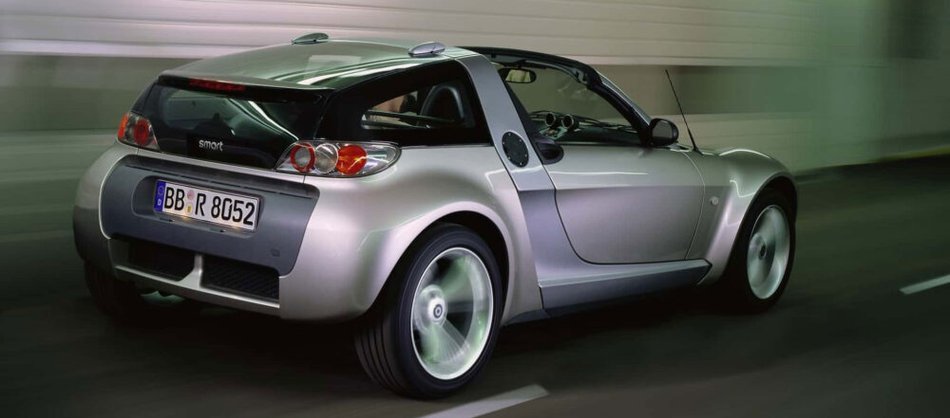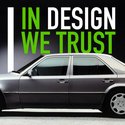
ODE TO ANALOG (About Tradition and Innovation)
As a child, when I heard the sound of an “important” engine, I tried to recognize it without turning around: the celestial symphony of the Ferrari V8, the unmistakable raucous and metallic sound of the Porsche boxer, the deep and powerful sound of an american V8.
I only had to browse through car magazines to start dreaming… I dreamed of driving an Opel Calibra, or a Honda Prelude or Mazda Miata, or maybe an Escort Cosworth.

Then on the street, as soon as I saw a Toyota Celica, or a Volvo 480, but also a Peugeot 205 GTI or Clio Williams, I couldn’t resist getting closer, contemplating their shapes, scrutinizing the interior and the instrument panel…

A few years later, when I was finally able to buy my first car, having a limited budget I chose a Smart Roadster. It had rear-wheel drive, was a coupé/cabriolet and very low, almost ground level: in my eyes, even if it may seem like blasphemy, it was almost a mini Lotus…

These cars made you dream, excited, fired up your imagination…
Cars, for me and many kids like me, were the center of a healthy and inexhaustible passion.
25 years later, the automotive world has completely changed and lately the bad news, for a petrolhead like me, follows one another almost every day…
One day we learn that Audi will no longer produce coupés and cabrios, sacrificed to the enormous investments required for the impending “electric revolution”; the next day, confirmation that Mercedes and BMW have also eliminated or will eliminate iconic models such as the SLK and Z4…
Even Porsche will replace the Cayman / Boxster with fully electric cars… and Maserati also announces the timetable that will transform it into a fully electric brand, just like Lotus has already been, since it entered the orbit of the giant Geely.
Coup de grace, Tourbillon, the latest Bugatti masterpiece, is presented as the swan song of the glorious V16 engine, a work of engineering art that would see its last incarnation on this marvel, before disappearing forever.
So, does a future of monotony await us, of perfectly functional and efficient cars, but all the same and devoid of emotions, like a row of cell phones placed on a table, practically indistinguishable from each other?
Faced with this prospect of dullness and flatness, it’s no wonder that the party of opponents of the electric car is gaining ground: with its riot of screens, apps and sensors of all kinds, in some cases useless and redundant, it seems to be the antithesis of a more romantic motoring, made of irrational sensations and passion, the one that has made millions of hearts beat for decades.
The electric revolution, largely imposed by law and without a real need on the part of the market, requires colossal investments and brings the traditional car industries to their knees.
The first to be sacrificed are the niche cars, the small sports bombs, coupés and cabriolets: in short, it’s the end of those cars designed to ignite the passion and imagination of enthusiasts.

In this discouraging panorama, the project NILU, born from the brilliant mind of Sasha Selipanov, appeared to me and many others as a true ray of light: an old-school, totally analogue supercar, which puts the driver, his emotions, his passion at the centre, immediately acclaimed by critics and enthusiasts. A stunning concept, even if it’s destined for a very lucky few…
As niche are other extraordinary projects such as the Murray T50 or the Aston Martin Valkyrie, united by the same spirit and with similar characteristics: a naturally aspirated engine with a very high rotation speed (over 10,000 rpm!), electronics limited to a minimum, maximum agility and lightness, 100% focus on passion…

These are masterpieces for a few, but they state a growing trend, if it’s true that even Mate Rimac, one of the prophets of electric supercars (as well as the owner of Bugatti itself) recently stated that “the time of electric supercars is over” and that the happy few now want to hear the glorious V8 and V12 engines roar again…
Perhaps this is why the Tourbillon itself has an almost completely analog interior, with just one small screen (which can also disappear) and in which the instrument panel is a masterpiece of precision mechanics, inspired by Swiss watches.
So revolution vs evolution? Innovation vs Tradition?
The truth is obviously more complex: and it’s no coincidence that the word Revolution includes the word Evolution. Upon deeper analysis, innovation always appears as an unprecedented synthesis of something that already existed, reassembled to give new and unexpected results.

Creativity itself is the ability to give a new, exciting and surprising form to the combination of existing elements, which are perhaps the result of a tradition that has evolved slowly, over decades or even centuries.
In this perspective, the clash currently underway in the automotive world, between supporters of the “Electric Revolution” and those of the glorious “Mechanical Tradition” makes little sense.
In the 18th century, when the first steam engines became widespread, various movements of thought were created against them, the most famous of which was perhaps the English Luddism: they saw machines as diabolical creatures, which erased the dignity of human work and would never reach its quality and precision. These groups therefore proposed to physically eliminate the machines (destroying or burning them) and to prohibit their production.

Similarly, at the end of the 19th century there was a large group of enthusiasts willing to swear that no “Motor Carriage” would ever match the performance and reliability of horse carriages. Cars were considered dangerous, dirty and unreliable except for short journeys, in short only toys for wealthy extravagants.
Yet, when the car reached a sufficient degree of reliability and its production became cheaper, its diffusion was very rapid and extremely widespread, becoming the symbol of the individual mobility and even of an era. There was no need for any government incentive, nor for ideological battles: the new technology asserted itself, by virtue of its superiority and the real innovation that it could bring to people’s lives.
Today, the mistake therefore consists in thinking that an innovation can be imposed ideologically and by political decision, without waiting for it to actually be the most effective technology for the contexts in which it must be applied. Today and for the coming years, electric propulsion can certainly be a winning solution for urban and shared mobility, but it doesn’t seem sufficiently mature, in terms of costs and flexibility, to completely and immediately replace traditional technologies.
When there is an electric sports coupé better than a dear old Porsche Boxster, the enthusiasts themselves will choose it; but eliminating the cars of our dreams by decree, and supporting electric mobility as the only possible dogma, cannot be the solution, and seems rather an act of “censorship”.
The electric revolution cannot in short be a process of homologation, in which all cars become the same and aimed only at efficiency.
Let’s welcome other Nilus, perhaps projected on a larger scale and affordable for all enthusiasts who, like me, feel orphaned by SLK, Z4 and TT…
As a designer, I dream that design and passion are put back at the center of the scene.
I dream of seeing courageous and out of the ordinary projects again: when a new Opel Tigra, or Ford Puma?

A new generation of small, economical, fast and exciting coupés and spiders, capable of rekindling the imagination of young enthusiasts… electric or thermal, it doesn’t matter, as long as there is a soul under the hood!
Marco Tonin


